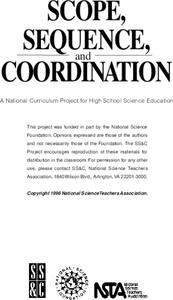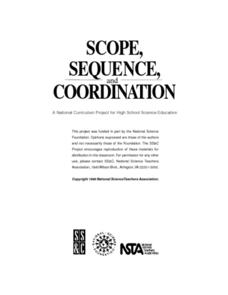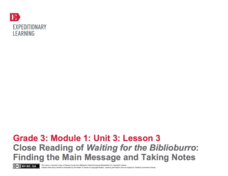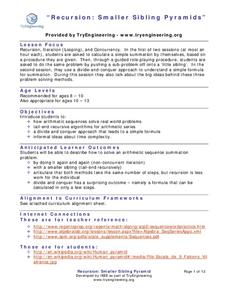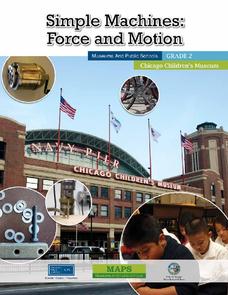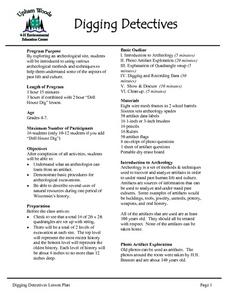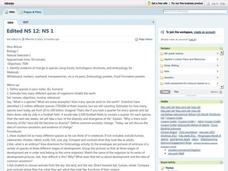Curated OER
Forces Acting on a Spring
Teaching elastic forces in your physics class is a snap with this resource! Scholars compare the stretch of rubber bands with differing width, then measure the stretch of a spring and calculate force. In a whole-class experiment, wire is...
Curated OER
Physical Properties of Matter
Five fabulous procedures introduce physics or chemistry classes to special properties of matter. They discover adhesion and cohesion, solubility, melting and boiling points, and viscosity through hands-on experiences. Tests are...
Curated OER
Gas Pressure, Volume, and Temperature
Physical science learners conduct a simple experiment using the heat of their hands to affect the fluid pressure. They place a balloon atop a freezing cold bottle and observe what occurs as it warms up. Both activities demonstrate how...
Curated OER
Work and Energy
The first activity may not work for your class if you don't have access to an open area of 30 meters and two cars of different masses, but the remaining activities can be used in any physics course. They all involve the investigation of...
Curated OER
Carbon Bonds in Chemistry
Venture into the world of macromolecules with three exciting, distinct laboratory activities. Young chemists examine the forms of carbon and discover how they are associated with atomic arrangement, construct models of carbon-containing...
Curated OER
Playing With Science
Young scientists investigate the scientific concepts and principles that help make common toys such as hula hoops, yo-yos, slinkies, and silly putty work. As a class, they read "Backyard Rocket Science, Served Wet" to get a look behind...
Curated OER
Time That Period
Physical science starters play with a pendulum in order to experience periodicity. Detailed procedures and a worksheet are included for day one. For day two, learners will use a graphing calculator to help them plot orbit data from a...
EngageNY
Close Reading of Waiting for the Biblioburro: Finding the Main Message and Taking Notes
Expose your class to Waiting for the Biblioburro, narrative nonfiction that will act as the bridge between ficiton and informational texts to come. Class members do a close reading of the text, looking at excerpts instead of the whole...
Purdue University
Animal Diversity and Tracking
What exactly are those glowing eyes in the night? Learners run an experiment to attract local wildlife and then document the number of visitors by identifying their tracks. They then analyze the data to draw conclusions about the types...
Curated OER
Political Parties in Campaign 2004
Young scholars examine the 2004 campaigns of John Kerry and George W. Bush. They identify the parties and their stance on important issues. They use the internet to research information and complete a worksheet to end the lesson.
TryEngineering
Recursion: Smaller Sibling Pyramids
Get siblings to do your work. Scholars learn how to perform summations of arithmetic sequences in an innovative lesson. They use iterations, smaller siblings (tail-end recursion), and the divide-and-conquer approach.
Chicago Children's Museum
Simple Machines: Force and Motion
Get things moving with this elementary science unit on simple machines. Through a series of nine lessons including teacher demonstrations, hands-on activities, and science experiments, young scientists learn about forces, motion,...
Alabama Learning Exchange
Welcome to our Classroom
Second graders create a classroom resource book for substitutes to help them feel more comfortable and familiar with faces and procedures in our classroom and school. They develop skill in using a digital camera and computer technology.
Curated OER
Chemistry Lesson Outline
Students identify the different types of chemical bonds. For this chemistry lesson, students research a procedure on growing crystals in the lab. They perform the experiment and share results with the class.
Curated OER
Everyday Objects
Students investigate different cultures based on the everyday objects of that culture. First, they explore Edward W. Nelson, who explored the Alaska region and first learned about the Eskimo culture.
Curated OER
Everyday Objects: Eskimo Life
Students describe the pioneering work of researcher Edward W. Nelson and identify everyday objects that aid in understanding a culture. In this everyday objects lesson, students conduct their own research into everyday objects by...
Curated OER
Keeping Milk Fresh
Young scholars identify the risks of spoilage and pathogens in fresh milk. They investigate the farmer's role in keeping milk safe to drink and identify safety procedures used in dairy farming.
Curated OER
The Art of Speech
Students discuss President Bush's goals for his second term in office. After reading an article, they identify the major themes of his second inaugural address. In groups, they brainstorm ideas and create murals to illustrate them...
Curated OER
The Decision to Go to War
Students examine President Bush's decision to go to war with Iraq. They work together to discuss a topic related to this given to them by their teacher. They answer questions to complete the lesson.
Curated OER
Density of a Gas
Eighth graders investigate the mass, volume, and density of a gas by producing it in a chemical reaction. The entire Density of a Gas Lab and L section of the K W L chart be formatively assessed.
Curated OER
Digging Detectives
Young scholars demonstrate basic procedures for archeological excavations. They explore an archeological site, students using various archeological methods and techniques to determine some of the aspects of past life and culture.
Curated OER
Ice Cream Science
Students review properties of matter and discuss how materials change when things are done to them. They observe how materials change as a reaction to temperature by following the procedure to make ice cream and recording the temperature...
Curated OER
DNA Model
Students are able to construct a candy model of DNA. They are able to list all of the parts of DNA that they investigated earlier. Students are able to describe what each part of DNA does. They create an edible model of DNA strands.
Curated OER
Natural Selection
Students estimate how many different species of organisms inhabit the Earth. In groups, they match the pictures of embryos at the different stages of development. They compare and contrast animals from the sky, land, and water and...





